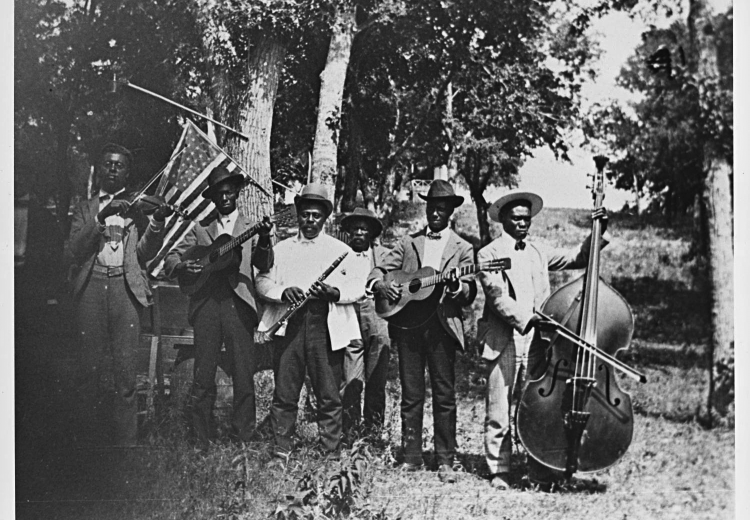Visualizing Emancipation

A band performs during a Juneteenth celebration in Texas on June 19, 1900. Photograph by Grace Murray.
The NEH-funded digital history project Visualizing Emancipation provides an interactive way to explore "emancipation events"—whether actions taken by enslaved people to secure their freedom, military engagements, or changes to law and policy—across both time and space. Many events link to the primary sources where they were originally documented.
Classroom Connections
The following inquiry questions are designed to support student investigation of the "Visualizing Emancipation" site and provide a foundation for further research.
Before beginning to explore the site:
- What do you know about the emancipation of enslaved people? How did you learn what you know?
- What is Juneteenth?
As they explore:
- What kinds of events are mapped on the site? How did each contribute to emancipation? What kinds of events affecting emancipation might not appear? Why not?
- What types of sources were used to map these events? Examine some of the primary sources linked on the site. What do you think were some of the challenges of creating this map?
- What primary sources would be helpful for understanding more about particular events included on the map?
After exploring the site:
- Did this site change or add to what you know about emancipation? How so?
- What did you learn from this site and how did you learn it?
- What new questions do you have about the emancipation of enslaved people in the U.S.?
EDSITEment has an extensive collection of lesson plans and other resources for teaching about the Civil War:
- Curriculum: Civil War: A "Terrible Swift Sword" (grades 9-12): This unit addresses several major questions about the Civil War period, asking students to work intensively with primary sources. Lesson 3, on Lincoln's wartime policies, asks students to read the Emancipation Proclamation and some contemporary responses to it.
- Teacher's Guide: Our "Chronicling America: History's First Draft" collection includes access to newspapers published by African American presses across the U.S. during the 19th and 20th centuries. Consider how these newspapers that included more coverage of issues and perspectives related to Black communities compare to mainstream white publications when analyzing U.S. history.
- The Richmond Planet (published in Richmond, VA from 1883-1938)
- The Appeal (published in Saint Paul, MN from 1889-19??)
- South Carolina Leader (published in Charleston, SC from 1865-18??)
- Lesson Plan: The Emancipation Proclamation: Freedom's First Steps (grades 9-12): Students assess why Lincoln issued the Emancipation Proclamation and African Americans' responses to it.
